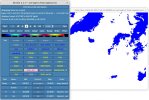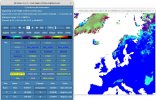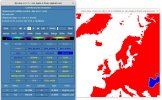Hi,
I would appreciate your input on the following error.
I submitted WRF-CTSM run starting from the 1st of October, 2017 and the interruption occurred 11 days later with the error arising from CTSM/lnd_import_export_utils.F90:
ERROR: Bottom layer specific humidty sent from the atmosphere model is less than zero.
I checked the 2m specific humidity (Q2M) variable output from all produced ctsm_lilac.clm*.nc files, however, none of the time steps exhibit values less than zero.
Could you please let me know what may be causing the run to stop?
Thank you,
Iris
I would appreciate your input on the following error.
I submitted WRF-CTSM run starting from the 1st of October, 2017 and the interruption occurred 11 days later with the error arising from CTSM/lnd_import_export_utils.F90:
ERROR: Bottom layer specific humidty sent from the atmosphere model is less than zero.
I checked the 2m specific humidity (Q2M) variable output from all produced ctsm_lilac.clm*.nc files, however, none of the time steps exhibit values less than zero.
Could you please let me know what may be causing the run to stop?
Thank you,
Iris



